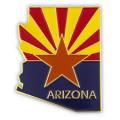Last Friday, I took my car to the Ford Nationals in Carlisle PA and took the opportunity to put it up on the chassis dyno to measure rear wheel horsepower and torque. The factory rated the 04 Mach 1 engine at 305 hp and 320 lbft. On the chassis dyno, the engine produced 291 hp and 303
lbft at the wheels. That's a far cry from the old 15% rule. Has anyone measured flywheel and rear wheel hp/torque, with the same engine, to get a true driveline loss using a TKO 600 (or Tremec 3550) with a Mustang 8.8 differential?
- Home
- Latest Posts!
- Forums
- Blogs
- Vendors
- Forms
-
Links

- Welcomes and Introductions
- Roadster
- Type 65 Coupe
- 33 Hot Rod
- GTM Supercar
- 818
- Challenge Series
- 289 USRCC
- Coyote R&D
- Ask a Factory Five Tech
- Tech Updates
- General Discussions
- Off Topic Discussions
- Eastern Region
- Central Region
- Mountain Region
- Pacific Region
- Canadian Discussions
- Want to buy
- For Sale
- Pay it forward
-
Gallery

- Wiki-Build-Tech


 Thanks:
Thanks:  Likes:
Likes: 


 Reply With Quote
Reply With Quote







